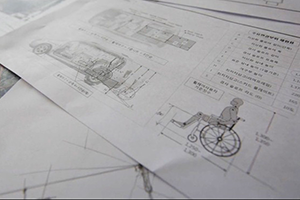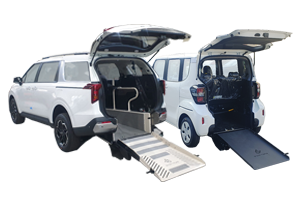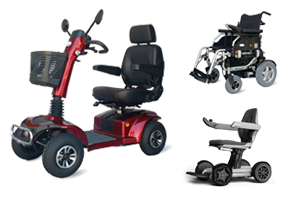9 Things Your Parents Teach You About Machine Espresso
페이지 정보

본문
How Does machine espresso machine small, simply click the next site, Work?
Machine espresso makes use of precise pressure and mind-blowing filter technology to make the perfect cup of coffee. What exactly is it that makes it work?
Espresso is created by forcing hot water under pressure through finely-ground coffee. The process is similar to that of making drip coffee. However, it is the pressure that makes the main difference.
The Group Head
The group head is the portafilter is inserted when you are making espresso. It is responsible for dispersing water into the portafilter, and controlling the pressure of the resulting extraction. There are numerous kinds of group heads each with distinct advantages and drawbacks. Some are designed for stability of temperature while others are built to handle pre-infusion. Others are made to control the lever. Some have a combination, such as the E61. This is a favorite among baristas since it provides multiple benefits in a single package.
As you can see in the above photo, the group head has numerous notches that you can place your portafilter and twist it by hand to secure it. There is also a gasket of rubber that resides inside the notches and helps to create the seal when you insert your portafilter into the machine. The notches on the head permit a precise location of the portafilter which is necessary to ensure an efficient extraction.
In addition to allowing you easily connect your portafilter, the group head is responsible to maintain an even temperature. This is achieved by cycling hot water around the portafilter and through the brew-basket, making sure that the temperature is at the right level to extract the coffee. It is important to remember that even a small espresso machine difference can make the difference between a good and great espresso.
The Pump
Motorized pumps in rotary espresso machines provide the nine atmospheric bar pressure required for espresso extraction. This differs from manual piston machines that use levers. The pressure builds up by removing tap water from a reservoir and pumping it through a heat exchanger prior being shot through the ground coffee inside the group head.
Pumps are typically cheaper and last longer than piston-driven machines. However, both kinds of machines can degrade due to excessive use and inadequate cleaning. They also create mechanical complexity which can result in a high price tag on even the simplest models.
Some espresso machine with milk frother machines can eliminate the pump entirely and employ steam pressure to create espresso. The downside is that the same boiler that produces steam also increases the temperature of water to the point of boiling which can cause excessive extraction. Additionally the machines often have to restore their pressure between cups, which takes time and energy.
A large majority of espresso machines employ the rotary or vibration pump. A vibration model uses a vibrating disk to generate pressure, while a rotary model pushes hot water through the ground at high speed. Both types of machine can make a great espresso, but the rotary pumps are quieter, and more durable than vibration pumps.
The Boiler
The boiler is the part that heats water to an optimal temperature for extraction. The resultant steam then reaches the portafilter which holds the ground espresso and is then pumped into the cup. During this process, the steam creates pressure and pushes through the grounds of the coffee. This produces a layer of crema that is then poured over. This is a hallmark of a great espresso.
There are three different types of espresso machines, each having different types of pumps and brew temperature. There are various ways to control the strength of the brew and the size of cup that can be produced by the machine.
The first espresso machines were steam-type. They used one boiler to create both steam and brew, however the pressure they were able to produce was very low - just two bars of atmospheric pressure maximum. This led to the coffee for espresso machine tasting burnt and bitter. This is the reason why Milanese makers Luigi Bezzerra and Desiderio Pavoni developed the modern espresso machine.
 The most popular espresso maker is a semi-automatic machine that has an electric pump. These are the images people have when they think of an espresso maker. If you have a semi-automatic machine you grind the beans and tamp them yourself but the pump provides regulated water flow and pressure. This is an excellent compromise between human touch and the mechanised accuracy.
The most popular espresso maker is a semi-automatic machine that has an electric pump. These are the images people have when they think of an espresso maker. If you have a semi-automatic machine you grind the beans and tamp them yourself but the pump provides regulated water flow and pressure. This is an excellent compromise between human touch and the mechanised accuracy.
The Filter
Typically, espresso machines employ a filter to separate out the grounds of coffee when they pass through the hot water. The filter is also a vital element of the machine's temperature control, as it helps prevent overheating.
A filter also improves flavor since it allows for the beans to flower for a longer period of time. This allows the beans to release their nuances and gives an opportunity to improve extraction.
However it is crucial to remember that even a great filter could result in a bad cup of coffee, since the quality of the beans and extraction are crucial.
It's in this area that the magic takes place. This is the reason why espresso tastes so delicious. The grouphead, often called the brew head, is the place where the portafilter (the thingy you put the ground coffee into) is placed when making espresso.
In the steam-driven espresso machine hot water is heated in an airtight tank to create steam, which is then pushed through the grounds under high pressure. These kinds of machines are typically cheaper and easier to maintain than pump-driven models. However, they are not as efficient in their ability to produce the perfect brewing conditions as they only operate at 1-1.5 bars of pressure, while the perfect shot requires 9-10 bar.
In recent years, espresso machines powered by compressed air-pump have become increasingly popular. They utilize an air compressor to force hot water into the ground and are more mobile than electric steam-driven espresso machines.
Machine espresso makes use of precise pressure and mind-blowing filter technology to make the perfect cup of coffee. What exactly is it that makes it work?
Espresso is created by forcing hot water under pressure through finely-ground coffee. The process is similar to that of making drip coffee. However, it is the pressure that makes the main difference.
The Group Head
The group head is the portafilter is inserted when you are making espresso. It is responsible for dispersing water into the portafilter, and controlling the pressure of the resulting extraction. There are numerous kinds of group heads each with distinct advantages and drawbacks. Some are designed for stability of temperature while others are built to handle pre-infusion. Others are made to control the lever. Some have a combination, such as the E61. This is a favorite among baristas since it provides multiple benefits in a single package.
As you can see in the above photo, the group head has numerous notches that you can place your portafilter and twist it by hand to secure it. There is also a gasket of rubber that resides inside the notches and helps to create the seal when you insert your portafilter into the machine. The notches on the head permit a precise location of the portafilter which is necessary to ensure an efficient extraction.
In addition to allowing you easily connect your portafilter, the group head is responsible to maintain an even temperature. This is achieved by cycling hot water around the portafilter and through the brew-basket, making sure that the temperature is at the right level to extract the coffee. It is important to remember that even a small espresso machine difference can make the difference between a good and great espresso.
The Pump
Motorized pumps in rotary espresso machines provide the nine atmospheric bar pressure required for espresso extraction. This differs from manual piston machines that use levers. The pressure builds up by removing tap water from a reservoir and pumping it through a heat exchanger prior being shot through the ground coffee inside the group head.
Pumps are typically cheaper and last longer than piston-driven machines. However, both kinds of machines can degrade due to excessive use and inadequate cleaning. They also create mechanical complexity which can result in a high price tag on even the simplest models.
Some espresso machine with milk frother machines can eliminate the pump entirely and employ steam pressure to create espresso. The downside is that the same boiler that produces steam also increases the temperature of water to the point of boiling which can cause excessive extraction. Additionally the machines often have to restore their pressure between cups, which takes time and energy.
A large majority of espresso machines employ the rotary or vibration pump. A vibration model uses a vibrating disk to generate pressure, while a rotary model pushes hot water through the ground at high speed. Both types of machine can make a great espresso, but the rotary pumps are quieter, and more durable than vibration pumps.
The Boiler
The boiler is the part that heats water to an optimal temperature for extraction. The resultant steam then reaches the portafilter which holds the ground espresso and is then pumped into the cup. During this process, the steam creates pressure and pushes through the grounds of the coffee. This produces a layer of crema that is then poured over. This is a hallmark of a great espresso.
There are three different types of espresso machines, each having different types of pumps and brew temperature. There are various ways to control the strength of the brew and the size of cup that can be produced by the machine.
The first espresso machines were steam-type. They used one boiler to create both steam and brew, however the pressure they were able to produce was very low - just two bars of atmospheric pressure maximum. This led to the coffee for espresso machine tasting burnt and bitter. This is the reason why Milanese makers Luigi Bezzerra and Desiderio Pavoni developed the modern espresso machine.
 The most popular espresso maker is a semi-automatic machine that has an electric pump. These are the images people have when they think of an espresso maker. If you have a semi-automatic machine you grind the beans and tamp them yourself but the pump provides regulated water flow and pressure. This is an excellent compromise between human touch and the mechanised accuracy.
The most popular espresso maker is a semi-automatic machine that has an electric pump. These are the images people have when they think of an espresso maker. If you have a semi-automatic machine you grind the beans and tamp them yourself but the pump provides regulated water flow and pressure. This is an excellent compromise between human touch and the mechanised accuracy.The Filter
Typically, espresso machines employ a filter to separate out the grounds of coffee when they pass through the hot water. The filter is also a vital element of the machine's temperature control, as it helps prevent overheating.
A filter also improves flavor since it allows for the beans to flower for a longer period of time. This allows the beans to release their nuances and gives an opportunity to improve extraction.
However it is crucial to remember that even a great filter could result in a bad cup of coffee, since the quality of the beans and extraction are crucial.
It's in this area that the magic takes place. This is the reason why espresso tastes so delicious. The grouphead, often called the brew head, is the place where the portafilter (the thingy you put the ground coffee into) is placed when making espresso.
In the steam-driven espresso machine hot water is heated in an airtight tank to create steam, which is then pushed through the grounds under high pressure. These kinds of machines are typically cheaper and easier to maintain than pump-driven models. However, they are not as efficient in their ability to produce the perfect brewing conditions as they only operate at 1-1.5 bars of pressure, while the perfect shot requires 9-10 bar.
In recent years, espresso machines powered by compressed air-pump have become increasingly popular. They utilize an air compressor to force hot water into the ground and are more mobile than electric steam-driven espresso machines.

- 이전글The Ultimate Glossary On Terms About European Single Mattresses 24.09.20
- 다음글Are You Responsible For The 3 Wheel Double Stroller Budget? 12 Tips On How To Spend Your Money 24.09.20
댓글목록
등록된 댓글이 없습니다.





